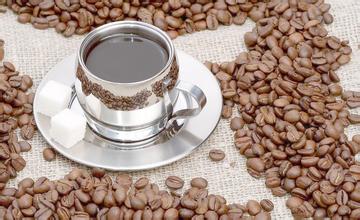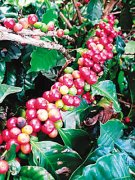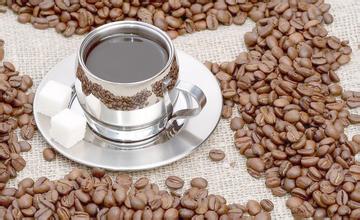Tarasu, a manor in Costa Rica's coffee producing area.
Tarrazu in Costa Rica is one of the major coffee producing areas in the world. The coffee produced is light and pure in flavor and pleasant in aroma. The volcanic soil of Costa Rica is very fertile and has good drainage.
The first country in America to grow coffee and bananas for commercial value. Coffee and bananas are the country's main exports. Coffee was introduced into Costa Rica from Cuba in 1729. Today, its coffee industry is the largest in the world.
One of the best organized industries, with a yield of up to 1700 kg per hectare. Costa Rica, with a population of only 3.5 million, has 400 million coffee trees, and coffee exports account for 25 per cent of the country's total exports. Costa Rica
Canada has also benefited from the Central American Society for Agricultural Research (Turrialba of the Central American Agricultural Research) in Tarasu.
Institute (IAAC for short), it is an important international research center.
High-quality Costa Rican coffee is called "extra hard beans". This kind of coffee can grow above 1500 meters above sea level. Altitude has always been a problem for coffee growers. The higher the altitude, the better the coffee beans, which is not only
Because the higher altitude can increase the acidity of the coffee beans and thus increase the flavor, and because the night temperature at the higher altitude is low, the trees can grow slowly, thus making the coffee beans have a stronger flavor. In addition, due to the fall at high altitude
Poor rainfall results in sufficient rainfall, which is also very beneficial to the growth of coffee trees. However, while there are many advantages to growing coffee at higher elevations, the additional transportation costs must be taken into account, which is likely to make production
Coffee becomes unprofitable. The coffee industry in Costa Rica has adopted new technologies to increase efficiency, including the use of "electric eyes" to select beans and identify coffee beans of irregular size.
Located in the south of the country's capital, San Jos é, Tarasu is one of the most valued coffee growers in the country. Tarasu Latin America (La Minita)
Tarrazu) coffee is a famous local product, but the production quantity is limited, about 72600 kilograms per year. It is a piece called "La".
Minita), which is owned by the last three generations of the McAlpine family in England. In fact, this land can produce more than 450 tons of coffee a year. But Tarasula
MetaCoffee is grown without artificial fertilizers or insecticides, and its harvesting and selection are done by hand in order to avoid some damage to coffee beans caused by air spray selection.
Other coffees worth mentioning are: Juan
Vinas,PR, H.Tournon, Windmill,SHB, Monte bello and Ssnta
Rosa). Fine coffee is generally grown in Geredia and the central canyon. Another type of coffee that attracts attention is Sarchi coffee, which represents Costa Rica.
One of the five towns of the Road), which grows on Mount Boaz (Poas), 53 kilometers from San Jose.
Volcano) on the hillside. Saatchi, founded in 1949, has a land area of 30770 hectares and grows sugar cane and coffee. The area is also famous for its handicrafts, attracting tourists from all over the world.
The country's coffee industry was originally owned by the Costa Rican coffee industry company Instituto del Caf é de Costa
Rica, abbreviated ICAFE), is now under the control of the official Coffee Committee (Oficina del)
Caf é) take over. Among the exported coffee, those products that are considered to be of substandard quality are colored with blue vegetable dyes and then transferred back to China for sale. Coffee consumed in China (dyed blue or undyed) accounts for about
10% of total output, and local per capita coffee consumption is twice that of Italy or the United States.

Important Notice :
前街咖啡 FrontStreet Coffee has moved to new addredd:
FrontStreet Coffee Address: 315,Donghua East Road,GuangZhou
Tel:020 38364473
- Prev

High-quality Arabica coffee beans cater to the needs of gourmet Zimbabwean coffee
The term "fine coffee" was first put forward by Ms. Knudsen of the United States in Coffee and Tea magazine. At that time, Ms. Knudsen, as a coffee buyer at B.C. Ireland in San Francisco, was very dissatisfied with the neglect of the quality of raw coffee in the industry, and even some big roasters mixed a large amount of Robesda beans in the comprehensive beans, so she put forward the concept of boutique coffee.
- Next

Boutique coffee beans introduction to Jamaican Blue Mountain Coffee
It is necessary to take a closer look at the myth of Blue Mountain Coffee, because the image of the past is often inconsistent with the reality of today. In 1725, Sir Sir Nicholas Lawes brought the first Blue Mountain Coffee species from Martinique to Jamaica and planted them in the St.Andrew area. Today's St. Andrew's producing area is still blue.
Related
- Does Rose Summer choose Blue, Green or Red? Detailed explanation of Rose Summer Coffee plots and Classification in Panamanian Jade Manor
- What is the difference between the origin, producing area, processing plant, cooperative and manor of coffee beans?
- How fine does the espresso powder fit? how to grind the espresso?
- Sca coffee roasting degree color card coffee roasting degree 8 roasting color values what do you mean?
- The practice of lattes: how to make lattes at home
- Introduction to Indonesian Fine Coffee beans-- Java Coffee producing area of Indonesian Arabica Coffee
- How much will the flavor of light and medium roasted rose summer be expressed? What baking level is rose summer suitable for?
- Introduction to the characteristics of washing, sun-drying or wet-planing coffee commonly used in Mantenin, Indonesia
- Price characteristics of Arabica Coffee Bean Starbucks introduction to Manning Coffee Bean Taste producing area Variety Manor
- What is the authentic Yega flavor? What are the flavor characteristics of the really excellent Yejasuffi coffee beans?

